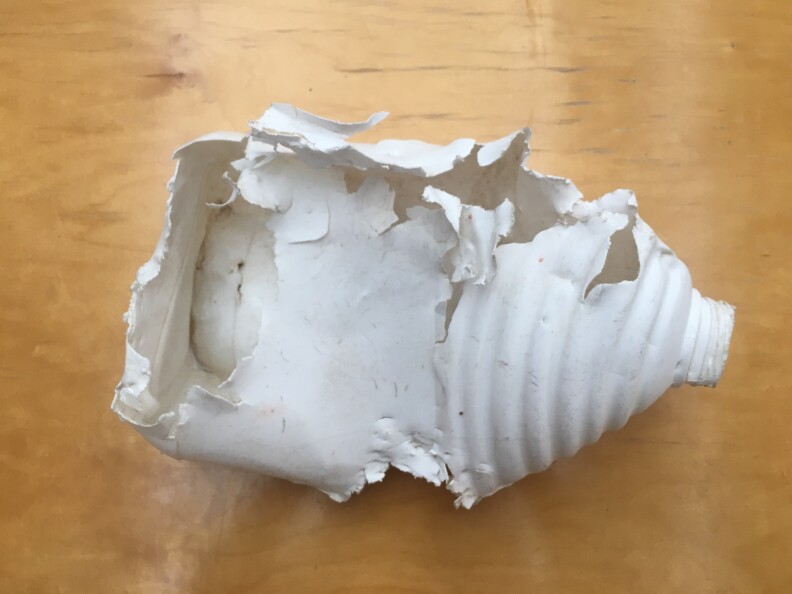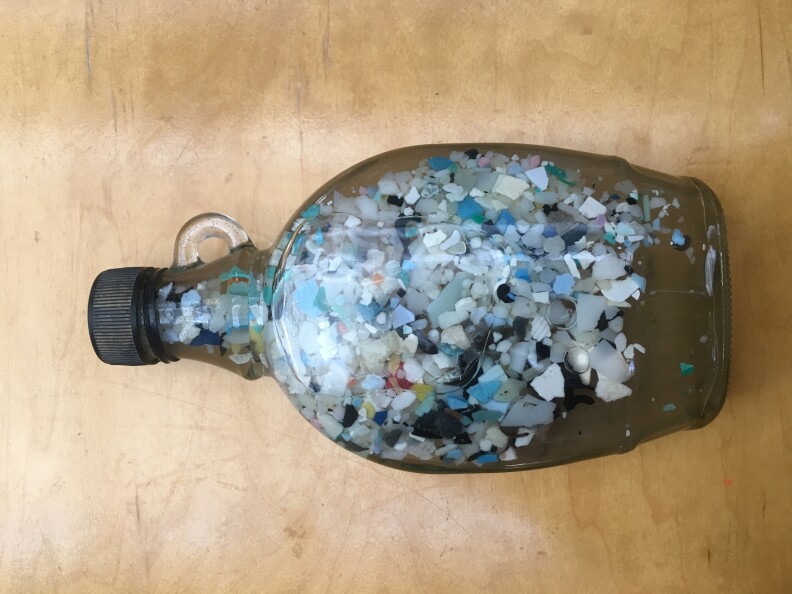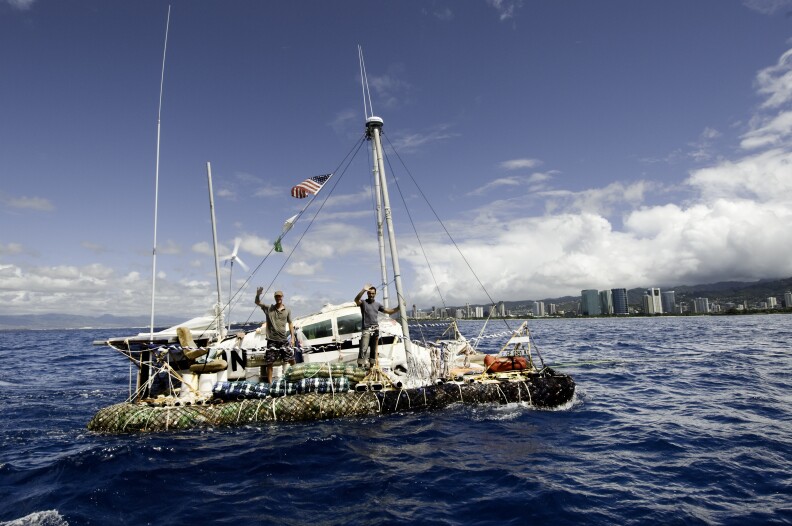Marcus Eriksen dreamed of rafting across the Pacific Ocean, but the USC grad and Marine Corps veteran didn't get a fancy boat. He went full-on DIY, making a motorless "raft" out of thousands of plastic bottles he found in junkyards.
After shoving off from Long Beach, he floated west for three death-defying months ... and lived to tell the tale. He also wrote a book about it. It's called "Junk Raft: An Ocean Voyage and A Rising Tide of Activism to Fight Plastic Pollution."
Marcus Eriksen recently joined Take Two host A Martinez to talk about it.
Interview Highlights
Why he made a plastic raft
Fifteen years ago, people thought out in the Pacific, there were these islands of trash out there. The truth is something much different. Plastic pollution is a global issue. It was a smog of small particles. My wife Anna Cummins and I started the 5 Gyres Institute, and we thought our first exhibition should be kind of a public stunt.
What the raft is made of
We called it junk because it really was junk: 15,000 plastic bottles. We went to every junkyard in Southern California. My co-navigator Joel Haskel, a sailor, cut off the masts of broken sailboats. Twenty-six masts made this square deck. We gathered all these old fishing nets and filled them with bottles. For our cabin we went to this cool junk yard in Lancaster and got an old aircraft.

How to navigate without a motor
We had an idea that the current sweep by Los Angeles heading South towards Mexico, those currents are taking trash into the North Pacific. They can take our raft as well. To demonstrate that process, the process of taking all the trash and sweeping in the world's center, we did it on a pile of trash.

What the plastic raft says about waste
Actually, I'm not against plastic. We use it in technologies. Half of the space shuttle is made with plastic. But for single-use throwaway stuff, that's what's nonsensical about it. We take plastic, designed to last forever, and use it once and get rid of it. That process is really trashing our planet, our beaches. It's all about prevention now. We have to stop the source.
The junk raft that endured the wrath of the Pacific will be on display at AltaSea, a scientific collaboration space at the port of Los Angeles.



